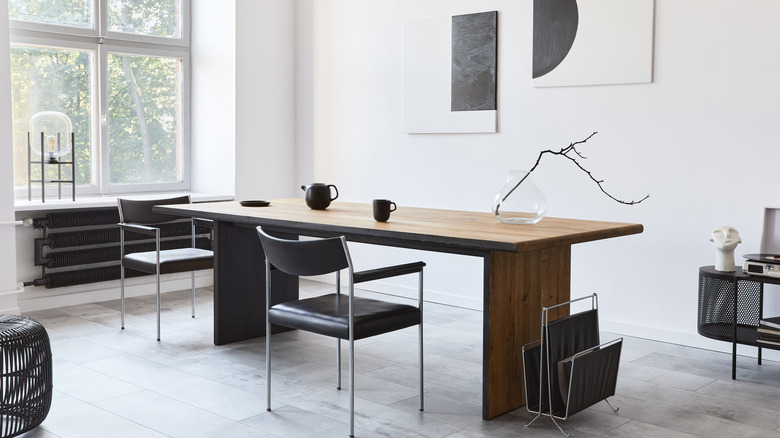The Worst Mistake You Can Make When Redoing Your Home Office
Remodeling a space to serve as a home office often becomes a fun and challenging balance of incorporating professional function and aesthetics into the designated space. Whether you're building an addition to your home, transforming an already existing room, or creatively carving workspace out of a closet or other tight, underused area, you'll be navigating design choices, both big and small. Furniture selection and layout, equipment and technology, storage, and clutter control are all things to contemplate for ultimate efficiency and functionality while also establishing a welcoming atmosphere. And you'll want to pay special attention to one overlooked, or perhaps underestimated, feature that plays a huge role in office productivity – lighting.
Poor lighting can create an unhealthy work environment, causing eye problems, mood swings, and decreased or inconsistent productivity, explains Lights.com. If poor lighting can wreak this kind of havoc, imagine what positive things good lighting can do!
Proper lighting promotes good health
Natural light offers health benefits in numerous ways; one of which is to encourage the body to follow its intuitive circadian rhythms. According to Sleep Foundation, everyone has circadian rhythms that operate in the background, carrying out vital processes that are important to our mental and physical well-being. As good sleep is crucial to how we function on a daily basis, the circadian rhythm known as the sleep-wake cycle is key to optimal health and performance.
Exposure to natural light also increases vitamin D levels in the body, which, as described by the Mayo Clinic, is of primary importance to bone health as well as immune, muscle, and brain cell function. GQ reports that vitamin D deficiency, easily detectable with a simple blood test, affects about 1 million people worldwide. Adding natural light is a great way to increase these healthful benefits while decreasing the harmful or less desirable impact of other forms of lighting.
A well-lit office increases productivity
Feeling sluggish can be a sign of an under-stimulating environment. Aside from headaches, eye strain, and mental fatigue, poor lighting blankets the atmosphere with a dullness that makes focusing more difficult. Whereas proper lighting can increase motivation and elevate moods, a poorly lit workspace zaps away feel-good vibes and can even cause depression, says Sunerzy.
It's important to distinguish between brightly lit and properly lit because there are various types of lighting, each of which can be the proper lighting for a specific environment. Bright light tends to magnify emotion as well as reactions to and interactions with people and things, thereby promoting intensified displays of anxiety, anger, or joy and excitability, explains Kemps Architectural Lighting. Blue light, in particular, can help to improve productivity by helping people to feel increasingly awake and focused.
If good or natural lighting is a challenge in your office and you spend a lot of time there, changing to a form of SAD (seasonal affective disorder) lighting can help alleviate symptoms of depression associated with limited exposure to sunlight. According to Bios Lighting, SAD lights simulate sunlight by using blue spectrum light technology. For best results, they recommend morning use of the light daily for about 30 minutes or so. It's like having your own personal sunshine right on your desk!


